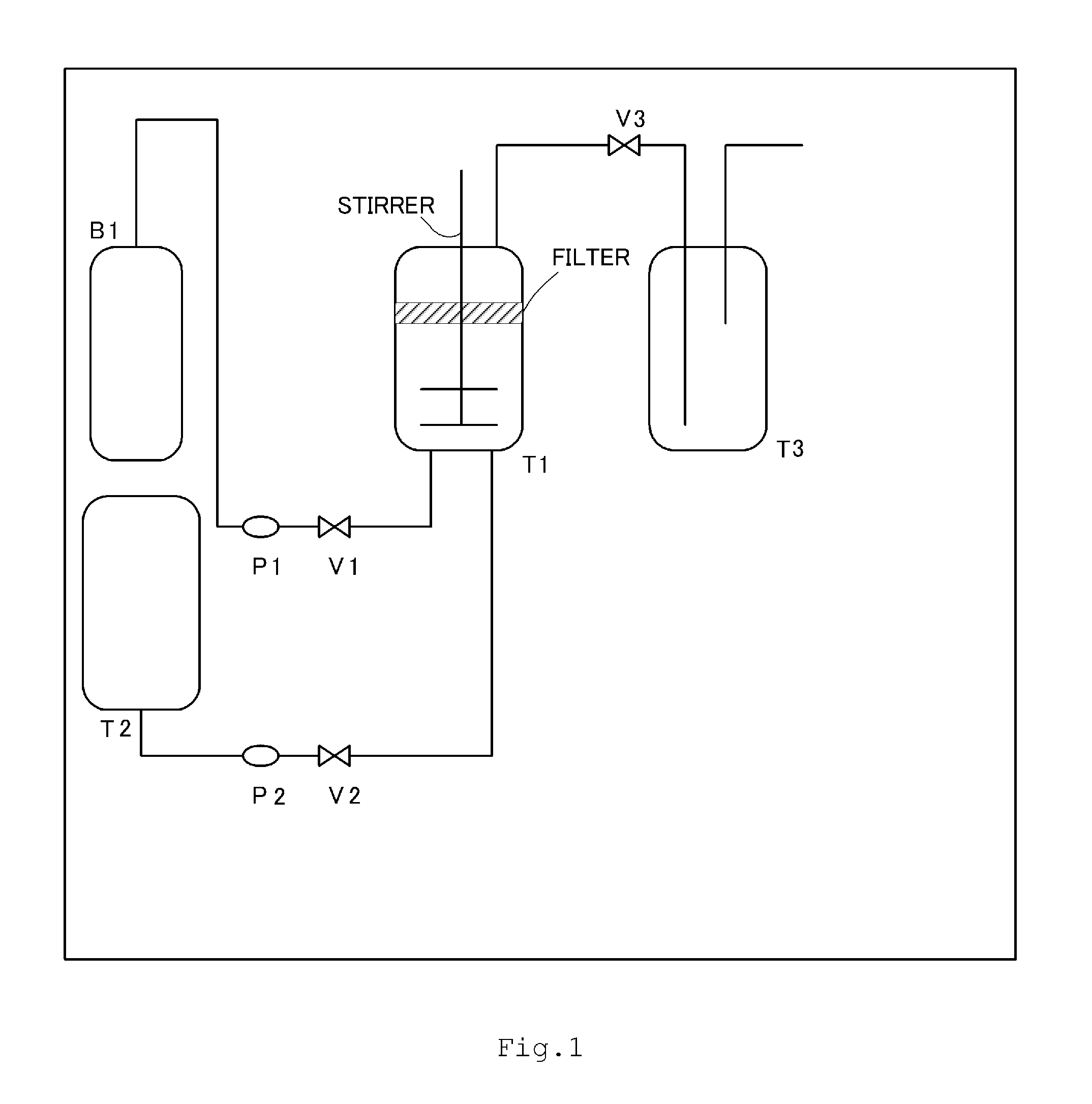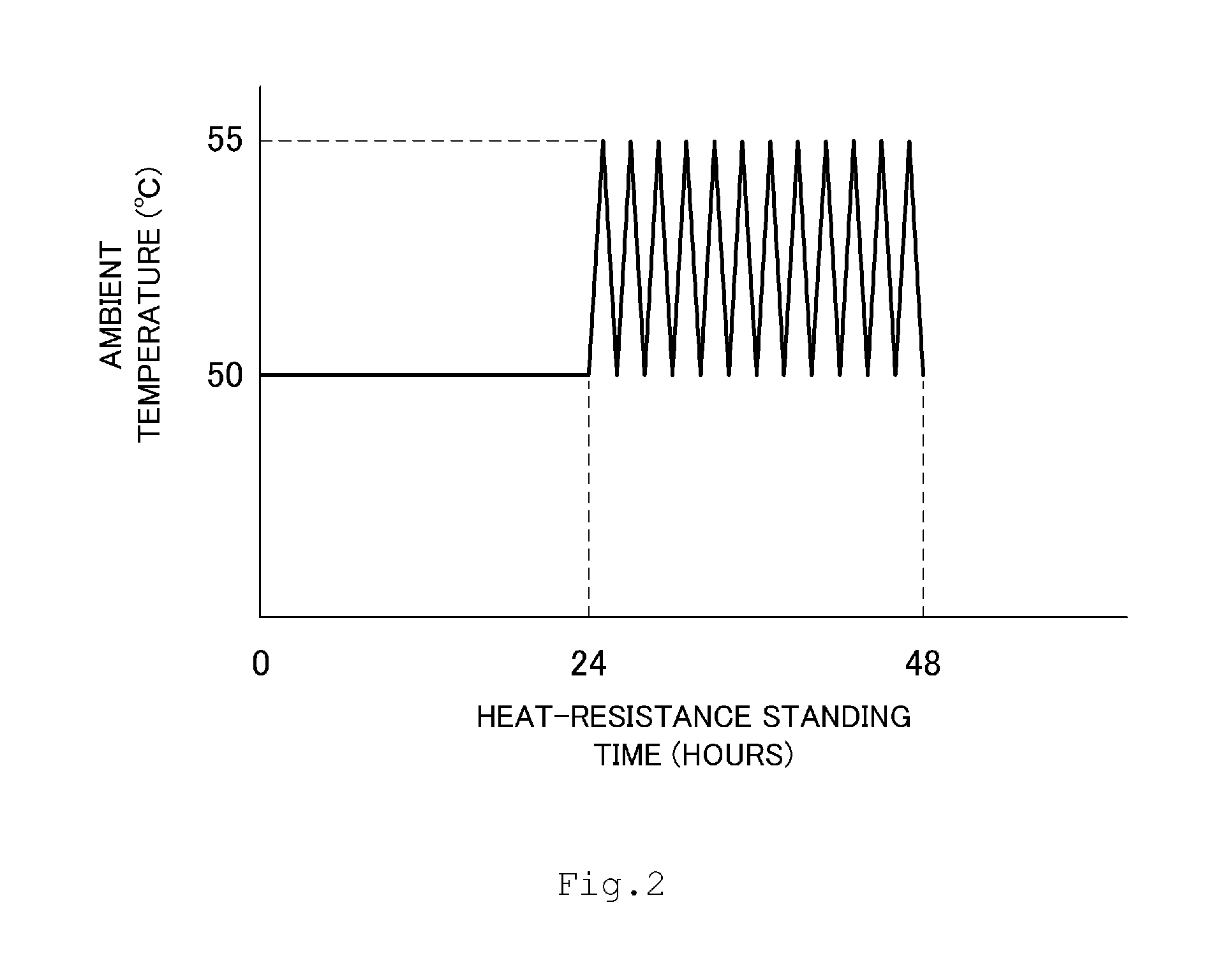Toner
a technology of toner and spherical paper, applied in the field of toner, can solve the problems of reducing the degree of gloss due to paper penetration, narrowing the fixing temperature range, and lack of elasticity, and achieves the effects of broad fixing latitude, excellent sharp melt properties, and advantageous low-temperature fixability
- Summary
- Abstract
- Description
- Claims
- Application Information
AI Technical Summary
Benefits of technology
Problems solved by technology
Method used
Image
Examples
example 1
Toner Particle 1 (Before Treatment) Production Step
[0265]In the experimental apparatus in FIG. 1, first valves V1 and V2 and pressure regulating valve V3 were closed, Resin Fine Particle Dispersion 1 (referred to in Table 4 as “Resin Fine Particles—1”) was charged into a pressure-resistant granulation tank T1 equipped with a filter for collecting toner particles and a stirring mechanism, and the internal temperature was adjusted to 30° C. Next, valve V1 was opened and, using pump P1, carbon dioxide (purity, 99.99%) was introduced from cylinder B1 into the pressure-resistant tank T1. When the internal pressure reached 5 MPa, the valve V1 was closed.
[0266]Separately, Block Polymer Resin Solution 1, Wax Dispersion 1, Colorant Dispersion 1 and acetone were charged into a resin solution tank T2, and the internal temperature was adjusted to 30° C.
[0267]Next, valve V2 was opened and, while stirring the interior of the granulation tank T1 at 2,000 rpm, the contents of the resin solution tan...
examples 2 to 24
[0334]Aside from selecting the block polymer resin solution and the wax dispersion so that the block polymer and wax in the Toner Particle 1 (before treatment) production step become the block polymer and wax shown in Table 4, Toners 8 to 30 were obtained in the same way as in Example 1. The toner production conditions and properties are shown in Tables 4 and 5. The results of evaluations are shown in Table 6.
[0335]In Toners 9, 11, 17 and 20 according to Examples 3, 5, 11 and 14, on the toner endothermic quantity curves, the endothermic peak for wax overlapped with the maximum endothermic peak from the binder resin. As a result, in each of these cases, the value obtained by subtracting the endothermic quantity for wax from the endothermic quantity for the maximum endothermic peak was determined as the endothermic quantity for the maximum endothermic peak from the binder resin. Also, in toners 1, 2, 5, 11 to 15, 17 to 28 and 30 according to examples of the invention, on the toner end...
PUM
 Login to View More
Login to View More Abstract
Description
Claims
Application Information
 Login to View More
Login to View More - R&D
- Intellectual Property
- Life Sciences
- Materials
- Tech Scout
- Unparalleled Data Quality
- Higher Quality Content
- 60% Fewer Hallucinations
Browse by: Latest US Patents, China's latest patents, Technical Efficacy Thesaurus, Application Domain, Technology Topic, Popular Technical Reports.
© 2025 PatSnap. All rights reserved.Legal|Privacy policy|Modern Slavery Act Transparency Statement|Sitemap|About US| Contact US: help@patsnap.com



